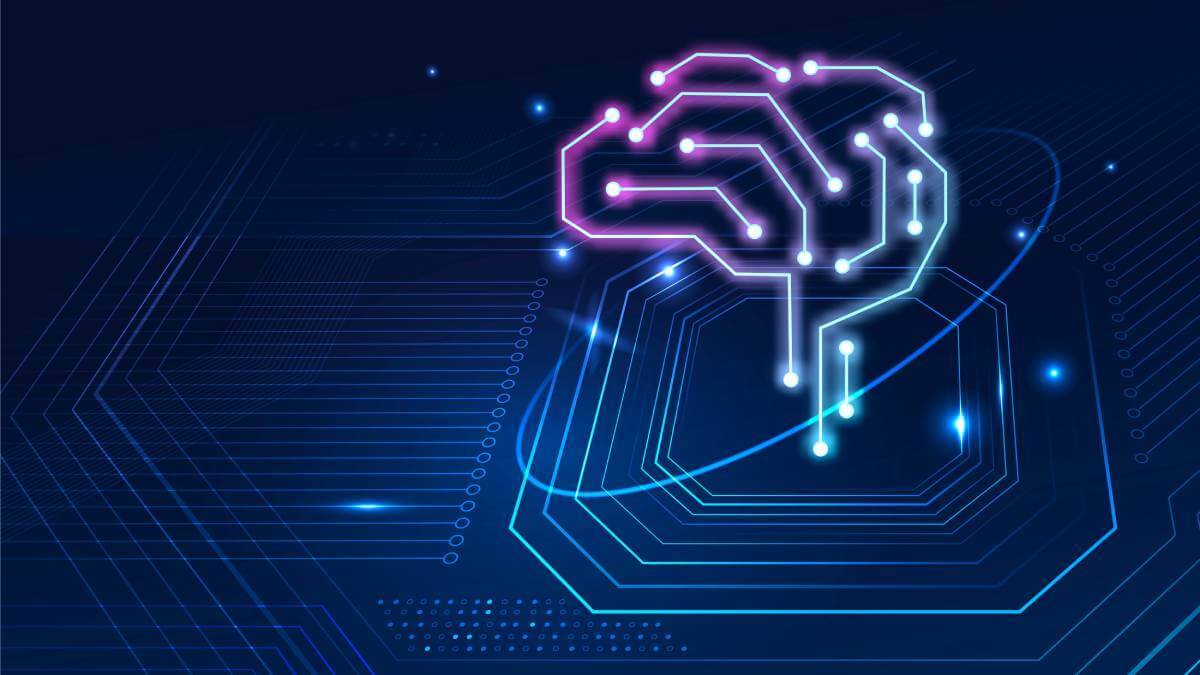Key adoption areas for machine learning in Africa
ICT analyst Francis Hook identifies some of the key sectors that could be positively impacted by machine learning, including education, government services, healthcare and climate tech.

As the tide of artificial intelligence (AI) sweeps across the continent, some attention needs to be paid to one of its key subsets – machine learning (ML), which has the potential to positively impact several key sectors and, for the most part, is not quite as encumbered as other aspects of AI when it comes to issues around ethics and regulation.
The adoption of machine learning has been greatly bolstered by previous investments in data processing and storage infrastructure, across both the private and public sectors. To an extent, technologies like cloud computing and big data analytics – both of which have provided a good foundation to understand the potential of machine learning – have helped as precursors.
The accumulation of huge amounts of data over the years by businesses and governments, coupled with open data initiatives and the desire among businesses to monetize data they possess, has made it easier to consider how machine learning can deliver a range of positive outcomes.
Unlike other aspects or subsets of AI, ML primarily focuses on areas that are unlikely to be "thin ice" or present major challenges, and therefore, the headwinds in proceeding with its adoption are not as strong.
Among the intricacies when considering machine learning are which models to adopt, often informed by factors including the type of data (text, images, sound, etc.); what problems need to be addressed; and availability of data.
While there may be a greater inclination toward models that are less autonomous and which place people in the driving seat, it should be kept in mind that sometimes human inputs and guidance may infuse biases and prejudices into some models and not others. For example, algorithms for rendering simulations on weather patterns will certainly not be affected by the same individual biases as would modelling systems designed to address societal issues like poverty and gender parity.
There are four main categories of machine learning models:
1. Supervised – these utilize labelled datasets either seek to solve problems regressively (e.g. predictions of prices) or via classification (spam detection, sentiment analysis).
2. Unsupervised – in which models seek to either group data based on similarities (clustering) or identify any unusual characteristics (association). These models are suitable for segmentation, forecasting and detecting anomalous patterns.
3. Semi supervised – which is the use of both labelled and unlabelled data, and which allows for the use of a broad range of data types. Application areas would include sentiment analysis, diagnostic image analysis and fraud detection.
4. Reinforced learning – these are models that continually improve themselves based on feedback provided, and, in essence, learn front experience. Application areas would include personalized learning and medical interventions.
Some key sectors in which ML could have a big impact include education, government services, healthcare and one key issue which has been a pain point for a while now – climate change.
Public sector ML
Governments possess huge amount of data from their engagements with citizens and as part of regular research studies. This information primarily comes from key sectors like education and healthcare, which are featured separately below.
Admittedly, such data may not always be of high quality or in formats that allow for its analysis, but attempts could be made to clean it up, structure it and leverage it to simplify repetitive tasks and save time.
Leveraging machine learning models can lend greatly to service provision, policy development, regulation, and resource planning and management.
Some of the key areas in which governments can deploy machine learning include national security (including cybersecurity), procurement, transport management, environmental monitoring, fraud prevention and weather observation, among many other areas.
Applications of particular interest, some of which cut across different functions or ministries, would include:
Detection and prediction – for crime, diseases, transport/traffic congestion, misinformation, national security incidents, tax evasion and fraud.
Simulation and evaluation – to gauge the outcomes of actions such as planned introduction or increments of taxes, benefits realized out of infrastructure development, project investments and new regulations.
Personalization and automation – in publicly provided education and healthcare.
Supporting healthcare
Healthcare is also another field in which vast amount of data accrues, ranging from information on diseases, imaging and laboratory results, and insurance claims.
It is also one area in which technology is already being leveraged in a big way to support healthcare delivery, from systems that manage and process information, to diagnostic and monitoring equipment.
Machine learning can be deployed to support so many facets of healthcare, including:
Discovery of new drugs and assessment of efficacy of drugs
Development of better diagnostic and monitoring instruments
Design and development of prosthetic devices
Early disease detection
Supporting actuarial needs for risk management and insurance aspects of healthcare
Personalized treatment
Faster and more accurate imaging and diagnostics
Automation of repetitive and arduous tasks
Medical history analysis
Administrative and medical support (through chatbots) for providers and patients

Healthcare is a field in which technology is already being leveraged to support healthcare delivery, from systems that manage and process information, to diagnostic and monitoring equipment. (Source: Image by rawpixel.com on Freepik)
For public sector healthcare, machine learning models can also help in areas such as planning and resource allocation to ensure greater coverage and inclusivity; early detection of epidemics; identifying gaps in service provision; supporting research; and general sector administration.
It can also be the avenue through which streamlined collaboration with academic, research and manufacturing stakeholders can be achieved via information exchanges.
Education opportunities
In the education sector – whether private or publicly provided – one key issue that can be addressed by machine learning models is the inordinate amount of time spent by teachers in administrative tasks – time which would be better spent ensuring positive learning outcomes in the classrooms.
Outside of time-consuming administrative tasks, another area relates to supporting and interacting with both students and parents.
Chatbots enabled by machine learning can go a long way in reducing the amount of time teachers spend on these activities.
Further, given varying learning needs and strengths, there is good latitude to use ML to track performance, evaluate individual student needs and prescribe customized learning approaches.
Taking a bird's eye view of education overall, ML can help identify any service gaps and make education more accessible and inclusive though more localization of learning materials, creating and delivering materials for learners with various disabilities and generally assisting with resource planning and allocation.
Annual exams sometimes present a recurring concern when it comes to security and fraud. Machine learning models can help detect fraud in education, as it does in other sectors.
Countering climate change
Being a veritable hot topic, climate change is probably one area in which urgent interventions using machine learning can greatly enhance ongoing efforts.
These can be either mitigation – decarbonization, exploring alternative energy sources, use of resources including land and water, pollution from transport and manufacturing – or adaptation – to build resilience in areas where there are likely no viable interventions or to manage climate-related disasters.
Some of the key areas for which machine learning can deliver benefits are:
Forecasting and modelling
Infrastructure maintenance and management – smart grids, optimizing pipelines, heating and cooling systems, etc.
Scientific research
Analyzing satellite imagery – forest cover, weather patterns
Information supporting agriculture
Air pollution and its impact on human and plant health.
Emission monitoring and control
Assessing the hazards arising from extreme weather events like floods, storms, drought, wildfires
Disaster management

Machine learning could greatly enhance ongoing efforts to mitigate climate change and help build climate resilience. (Source: Image by pikisuperstar on Freepik)
Machine learning can also be used to evaluate the efficacy of various environmental, social and governance (ESG) interventions adopted by sectors that contribute significantly to carbon footprints. These include manufacturing, telecommunications, energy, technology and transport.
Generally, efforts to leverage ML to address various climate change concerns tend to be collaborative and multidisciplinary – drawing together players from the technology sphere, policy makers, academia, and participants from different industry sectors. As such, cooperation frameworks and roadmaps would be among key considerations.
Issues to consider going forward
Foremost among the current challenges are issues to do with the data needed to train models – ranging from availability, volume, completeness and quality. In addition, multimedia data (video and audio) present different challenges compared to text and images.
Legacy systems that were built to serve different purposes – and therefore store and produce data in different ways – can sometimes be a concern when it comes to sharing information for the use in machine learning. Thus, agility and flexibility are things that need to be considered.
Want to know more about technologies like AI, ML, IoT and smart cities? Check out our dedicated Emerging Tech content channel here on Connecting Africa.
Infrastructure to develop machine learning models, as well as the required skills (and range of skills) needed for the successful development of ML models, is another important area to consider.
*Top image source: Image by rawpixel.com on Freepik.
— Francis Hook, Africa ICT Analyst, special to Connecting Africa


_(1)_(1).jpg?width=700&auto=webp&quality=80&disable=upscale)
.jpg?width=700&auto=webp&quality=80&disable=upscale)
.jpg?width=700&auto=webp&quality=80&disable=upscale)
_(1).jpg?width=700&auto=webp&quality=80&disable=upscale)


.jpg?width=700&auto=webp&quality=80&disable=upscale)
